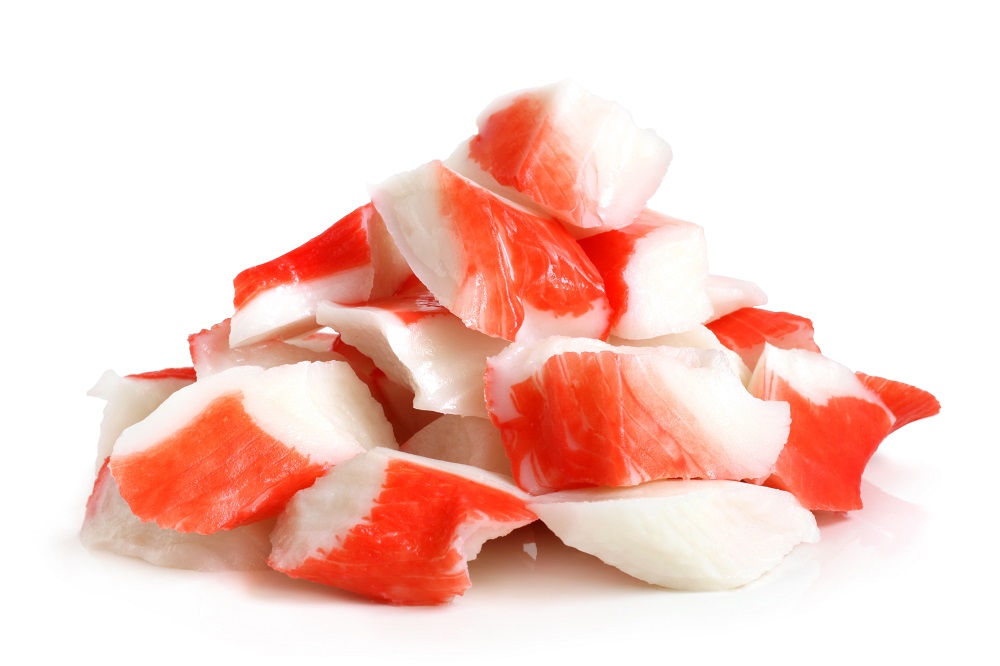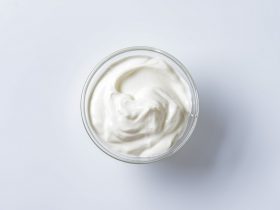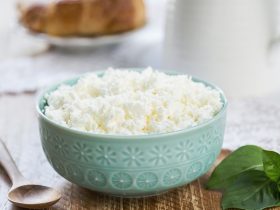Imitation crab is popular, convenient and affordable. But is it safe for pregnant women to eat? Read on to find out more about this versatile, ready to eat seafood product.
The use of pollock, which contains low levels of mercury, in surimi-based products like imitation crab makes it safe for consumption during pregnancy. Imitation crab is also already fully cooked prior to packaging, hence making it safe from potential food borne pathogens. However, pregnant women should be vigilant of other seafood species that can also be used in making surimi, especially the high-mercury types of fish and mollusks that may cause allergies.
Jesmarie Macapagal, RN, MD, DPPS
This article talks more about what imitation crab is, and how it is manufactured and prepared. Next, it will discuss the risks of potential allergens present in imitation crab. Lastly, it will provide the safety issues and ways to maintain safety of imitation crab for consumption during pregnancy.
What is Imitation Crab?
In spite of its name, imitation crab contains no crab at all. Rather, it is made of processed fish meat, hence the pseudonym “hot dog of the sea”. It is often referred to as “crab stick”, “krab”, or plain “surimi”. In Japan, they are also called “kamaboko”.
“Surimi” is a Japanese term for deboned, minced, and washed fish flesh, that is used for manufacturing imitation seafood products (Martin-Sánchez et al., 2009). Surimi fish paste is an intermediate product used in preparing a variety of ready to eat (RTE) seafood products, called surimi-based products (SBPs), marketed in the forms of crab sticks, fish slices, lobster tails, and others (Ducept et al., 2012).

According to the U.S. FDA Compliance Policy Guide (CPG) on processed seafood products (2008), surimi is a fish protein coming from one or more fish species that are made to resemble crab meat, shrimp, lobster, scallops, and other seafood.
Freshly caught Alaskan pollock is the most popularly fish used in making surimi. The fish is filleted, minced, washed to remove fat and unwanted parts, then strained (Hicks, 2016). The raw fish proteins are solubilized in salt then heated to form a surimi hydrogel (Martin-Sánchez et al., 2009).
Salt, sugar, and/or sorbitol are added to stabilize the protein during frozen storage. Afterward, the surimi is blended with binders, such as starch or egg white. Artificial flavoring is added to make it taste like the desired product (Hicks, 2016). Monosodium glutamate (MSG) is also added. Orange or red coloring makes the mixture resemble shellfish meat.
Common additives used in imitation crab include:
- Gums – xanthan gum and carrageenan
- Colorants – carmine, paprika, beet juice extract, lycopene
- MSG and disodium inosinate
- Crab extract or artificial crab flavorings
- Preservatives – sodium benzoate and phosphates
The surimi fish paste is formed into the desired shape and texture, and fully cooked (Hicks, 2016), then vacuum sealed to maintain its freshness.
The main component of the imitation crab is surimi. It makes up 35 to 50 percent of the product’s weight. The remaining 50 to 65 percent of an imitation crab is made up of the following processed ingredients:
- Starches – wheat, potato, tapioca, corn; these make the surimi firm and freezable
- Salt – sodium chloride or potassium chloride adds flavor and helps turn the fish meat into a sturdy paste
- Vegetable oil – enhances texture, shelf life and coloring
- Sugar and sorbitol – add sweetness and help the product freeze and thaw easily
- Egg white or soy – added for a boost of protein and to improve texture and color; also make the imitation crab glossy
- Water – helps create the desired texture
The following macronutrients are present in one 85 gram serving of imitation crab and compared to those found in the same amount of raw Alaskan king crab:
| Imitation Crab | Alaskan King Crab | |
| Calories | 80.8 | 71.4 |
| Protein | 6.48 grams | 15.6 grams |
| Fat | 0.391 gram | 0.51 gram |
| Carbohydrate | 12.8 grams | 0 gram |
| Fiber | 0.425 gram | 0 gram |
Real crab contains significantly higher levels of nutrient than imitation crab. While the calories in an Alaskan king crab are derived from proteins, calories from an imitation crab are derived from added carbohydrates.
Real crab also provides a higher amount of vitamins and minerals, and is a good source of vitamin B12, selenium and zinc. Surimi loses these nutrients during washing and processing. Although some manufacturers add omega-3 fatty acid to their imitation crab products, real crab is still higher in omega-3 fatty acid content.
Imitation crab has become popular and is commonly used as ingredient in seafood salad, crab cakes, and California sushi rolls.
Learn More: Can you eat crab legs while pregnant?
Risk of Allergies from Imitation Crab
Alaskan pollock is the main fish species used for the production of surimi. However, due to increasing demand for SBPs and overexploitation of pollock, various underutilized fish species are now also being used. Cephalopods, squids in particular, are also often used. Therefore, surimi represents a product that could make use of a wide range of seafood species (Giusti et al., 2017).
According to the European Union (EU) law on food labelling, the presence of ingredients that may potentially cause allergies should be listed, including fish and mollusks. However, it is not mandatory for manufacturers to provide the commercial or scientific name of the seafood species present in SBPs. Hence, the use of cephalopods may be unlisted and can cause a potential hazard for allergic consumers (Giusti et al., 2017).
In 2007, Pepe et al. concluded that mislabeling among SBPs was “a large-scale phenomenon”. This study found that 84.2 percent of SBPs made use of seafood species that were different from those that were declared on the label.
In 2017, Giusti et al. examined various SBP products and found that 37.5 percent of the samples they took were labeled incorrectly. Among these, 25 percent declared a different species, while another 25 percent did not report the presence of mollusks on their labels, which can pose a health threat for consumers with potential allergies.
Safety Issues Regarding Consumption of Imitation Crab During Pregnancy
The U.S. Food and Drug Administration (US FDA) recommends that pregnant women avoid eating shark, swordfish, mackerel and tilefish because these fish often harbor high levels of mercury.
Mercury is a potent neurotoxin and is able to cross the placenta. It has the potential to cause significant damage to the developing fetal nervous system (Evans, 2002). Exposure to mercury during pregnancy has been associated with pregnancy complications and developmental problems among infants (Solan & Lindow, 2014).
Pollock is a low-mercury type of fish. According to the US FDA, pollock is one of the “best choices” for seafood consumption during pregnancy. Therefore, imitation crab can be considered a seafood dish that is safe for pregnant women to eat.
However, any type of raw seafood should be avoided during pregnancy. Thus, even if the imitation crab is safe when eaten on its own, it should not be eaten when placed on top of raw sushi or stuffed in raw lobster.
Moreover, salt is necessary in the production of surimi to maintain the gelation of salt-soluble myofibrillar proteins. At present, there is growing concern to consume healthier foods and prevent the development of several chronic diseases caused by unhealthy and high-sodium diet (Monto et al., 2021).
Compared to real crab, imitation crab contains a higher amount of sodium. While 3 ounces of real crab meat contains 911 milligrams of sodium, the same amount of imitation crab meat contains 715 milligrams of sodium.
How to Keep Imitation Crab Safe During Pregnancy
When buying imitation crab, look for opaque off-white meat with red color on the surface. If the product is frozen, there should be no crystals in the package, that would indicate freeze-thaw problems. Once thawed, check that the product is moist and firm, not wet and soft. Do not buy any product with sour, fermented, or sulfur smells, which would indicate spoilage (Hicks, 2016).
Always read the label and find out if you are allergic to any ingredient. Prevent cross-contamination with raw seafood and raw meat by maintaining sanitary food preparation measures (Hicks, 2016).
Imitation crab should always be kept inside the refrigerator. It should not be left at room temperature for more than 1 to 2 hours. Once the package has been opened, it should be fully consumed within 3 days.
Final Thoughts
Imitation crab is a processed fish meat made by combining minced fish with starch, egg white, sugar, salt, and additives, to mimic real crab meat. It is less expensive that real crab, but is also less nutritious.
In terms of safety, imitation crab is not known to cause harm, as long as it was stored properly, made with low-mercury fish, and all ingredients in the dish are fully cooked.
However, if given a choice, pregnant women should opt for real crab instead of an imitation one. Real crab can provide lots of nutrients without additives and added sugar and salt from an imitation crab.
Consult your most trusted dietitian or health care provider to know more about the safety of eating ready to eat processed seafood products during pregnancy.
References
- https://www.healthline.com/nutrition/imitation-crab
- https://www.fda.gov/regulatory-information/search-fda-guidance-documents/cpg-sec-540700-processed-andor-blended-seafood-products
- https://www.webmd.com/diet/what-is-imitation-crab#1
- https://www.medicalnewstoday.com/articles/imitation-crab#what-it-is
- https://www.healthline.com/health/pregnancy/can-i-eat-imitation-crab-while-pregnant
- https://www.fda.gov/food/consumers/advice-about-eating-fish
- Ducept, F., de Broucker, T., Souliè, J. M., Trystram, G., & Cuvelier, G. (2012). Influence of the mixing process on surimi seafood paste properties and structure. Journal of Food Engineering 108(4), 557-562. https://doi.org/10.1016/j.jfoodeng.2011.09.006
- Evans, E. (2002). The FDA recommendations on fish intake during pregnancy. Journal of Obstetric, Gynecologic, and Neonatal Nursing 31(6), 715-720. PMID: 12465868
- Giusti, A., Armani, A., & Sotelo, C. (2017). Advances in the analysis of complex food matrices: Species identification in surimi-based products using Next Generation Sequencing technologies. PLOS ONE 12(10), e0185586. doi: 10.1371/journal.pone.0185586
- Hicks, D. (2016). Seafood safety and quality: The consumer’s role. Foods 5(4), 71. doi: 10.3390/foods5040071
- Martin-Sánchez, A. M., Navarro, C., Pérez-Álvarez, J. A., & Kuri, V. (2009). Alternatives for efficient and sustainable production of surimi: A review. Comprehensive Reviews in Food Science and Food Safety 8(4), 359-374. https://doi.org/10.1111/j.1541-4337.2009.00087.x
- Monto, A. R., Li, M., Wang, X., Wijaya, G. Y., Shi, T., Xiong, Z., …, & Gao, R. (2021). Recent developments in maintaining gel properties of surimi products under reduced salt conditions and use of additives. Critical Reviews in Food Science and Nutrition 1-16. doi: 10.1080/10408398.2021
- Pepe, T., Trotta, M., Di Marco, I., Anastasio, A., Bautista, J. M., & Cortesi, M. L. (2007). Fish species identification in surimi-based products. Journal of Agricultural and Food Chemistry 55(9), 3681-3685. doi: 10.1021/jf063321o
- Solan, T. D., & Lindow, S. (2014). Mercury exposure in pregnancy: A review. Journal of Perinatal Medicine 42(6), 725-729. doi: 10.1515/jpm-2013-0349




